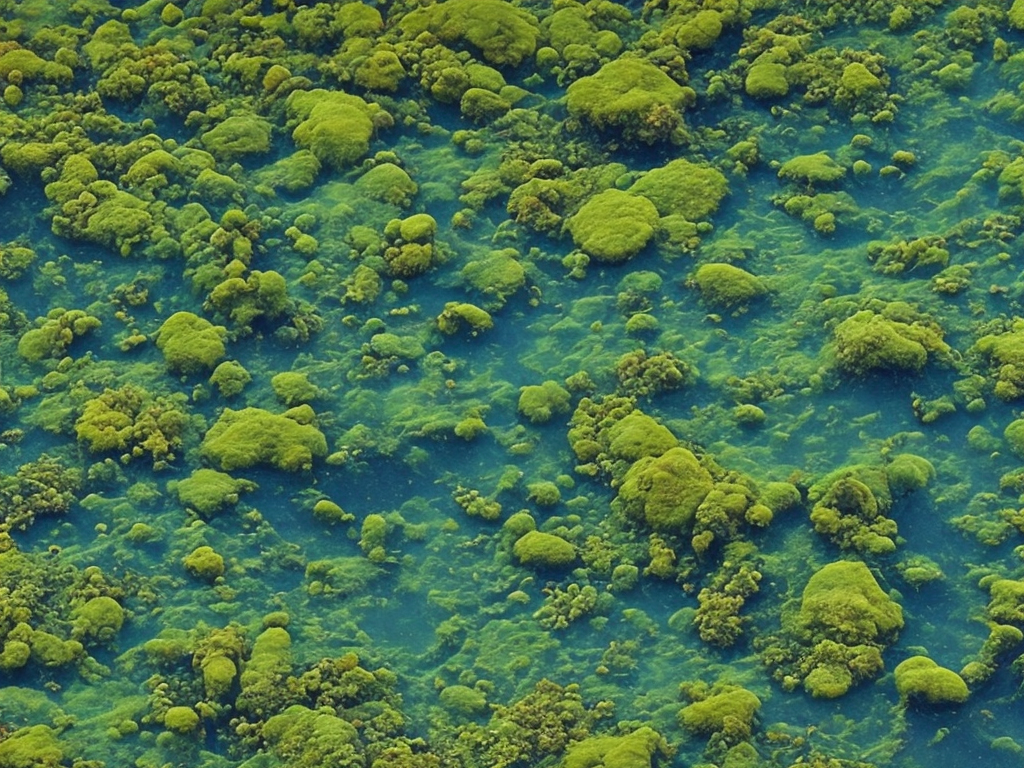
Eutrophication and algal bloom are two terms that are often used interchangeably, but they are not the same thing. Both are related to the quality and health of our water, but they have different causes and effects.
What is Eutrophication?
Eutrophication is the process by which a body of water becomes enriched with nutrients, usually nitrogen and phosphorus. These nutrients can come from natural sources like decaying plant matter or from human activities like agriculture and sewage discharge. When these nutrients enter a body of water, they encourage the growth of algae, which can create a problem known as an algal bloom.
As algae grow, they use up the nutrients in the water, reducing the amount of available nutrients for other plants and animals. When the algae die, their decaying bodies consume oxygen in the water, leading to a decrease in dissolved oxygen levels. This can make it difficult for other aquatic organisms to survive, leading to a loss of biodiversity.
Eutrophication is a natural process, but human activity has accelerated and amplified it. When humans build cities and develop farmland, they create sources of nutrient pollution that can enter waterways and lead to eutrophication.
What is Algal Bloom?
Algal bloom is a rapid increase in the population of algae in a body of water, which can lead to a number of problems. Some algae species release toxins that can be harmful to humans and animals, while others can create a thick layer of slime on the water’s surface, degrading water quality and creating a bad smell. In extreme cases, algal blooms can suffocate aquatic life by depleting the water’s oxygen levels.
Algal blooms are caused by a combination of environmental conditions and nutrient availability. The presence of nutrients like nitrogen and phosphorus in the water can fuel the growth of algae, but environmental conditions like temperature, sunlight, and water flow can also play a role.
Algal blooms can occur naturally, but they are often caused or exacerbated by human activities. Agricultural runoff, sewage discharge, and pollution from urban areas can all contribute to nutrient pollution in waterways, leading to algal blooms.
Differences between Eutrophication and Algal Bloom
Eutrophication and algal bloom are related processes, but they have some important differences. Eutrophication is the process by which a body of water becomes enriched with nutrients, while algal bloom is a rapid increase in the population of algae in a body of water. Eutrophication can lead to algal blooms, but not all algal blooms are caused by eutrophication.
Another difference between eutrophication and algal bloom is the time frame of their effects. Eutrophication can take years or even decades to manifest, while algal blooms can occur rapidly, sometimes appearing within days or weeks of nutrient inputs.
Eutrophication can have long-term effects on the health of a body of water, leading to decreased biodiversity and impaired water quality. Algal blooms can have more immediate effects, including harming humans and animals that come into contact with the water.
Preventing Eutrophication and Algal Bloom
Preventing eutrophication and algal bloom requires a combination of approaches, including reducing nutrient inputs into waterways and managing land use practices that contribute to nutrient pollution.
One approach to reducing nutrient inputs into waterways is to promote the use of best management practices in agriculture. This can include reducing fertilizer use, planting cover crops, and managing manure and waste disposal to minimize nutrient runoff.
Another approach is to improve wastewater treatment systems, which can remove excess nutrients before they are discharged into waterways. Similarly, reducing urban runoff through the use of green infrastructure like rain gardens and vegetated swales can help prevent nutrient pollution and the formation of algal blooms.
Conclusion
Eutrophication and algal bloom are two related but distinct processes that can have negative impacts on the health of our waterways. Eutrophication is the buildup of nutrients in a body of water that can lead to decreased biodiversity and impaired water quality. Algal bloom is a rapid increase in the population of algae in a body of water that can lead to problems like oxygen depletion and the release of toxic compounds.
Preventing eutrophication and algal bloom requires a concerted effort to reduce nutrient inputs into waterways, including promoting best management practices in agriculture, improving wastewater treatment systems, and reducing urban runoff. By working to address these issues, we can help protect the health of our waterways and the wildlife that depend on them.
 Self-Instruct
Self-Instruct